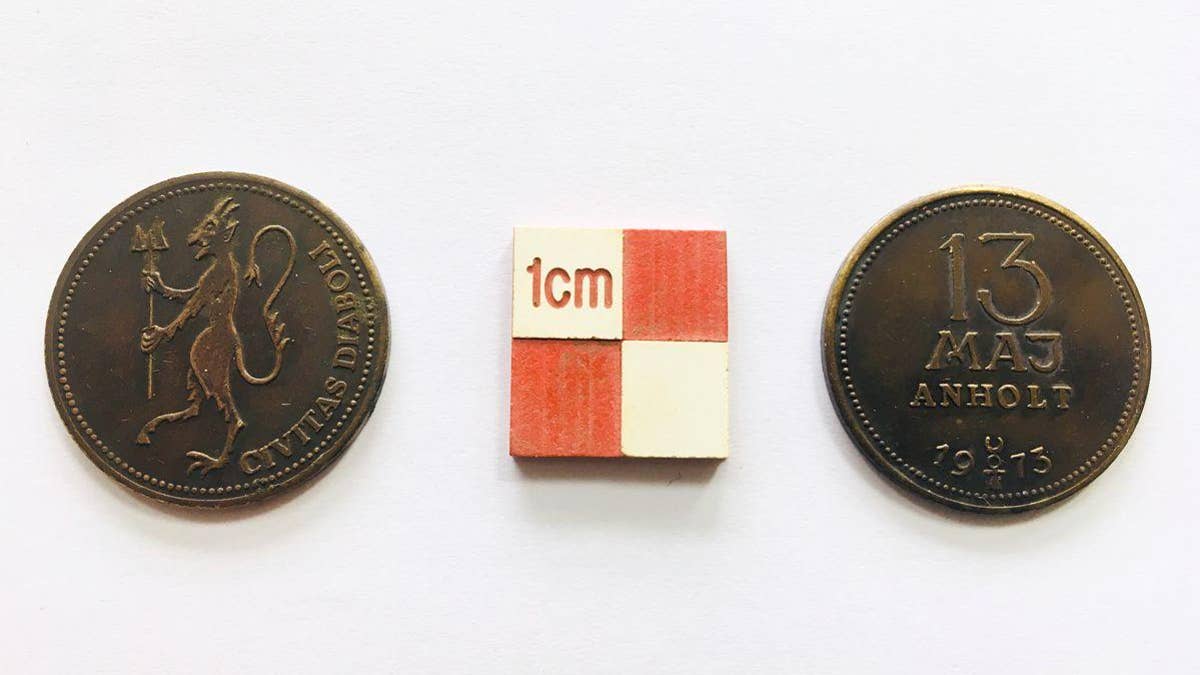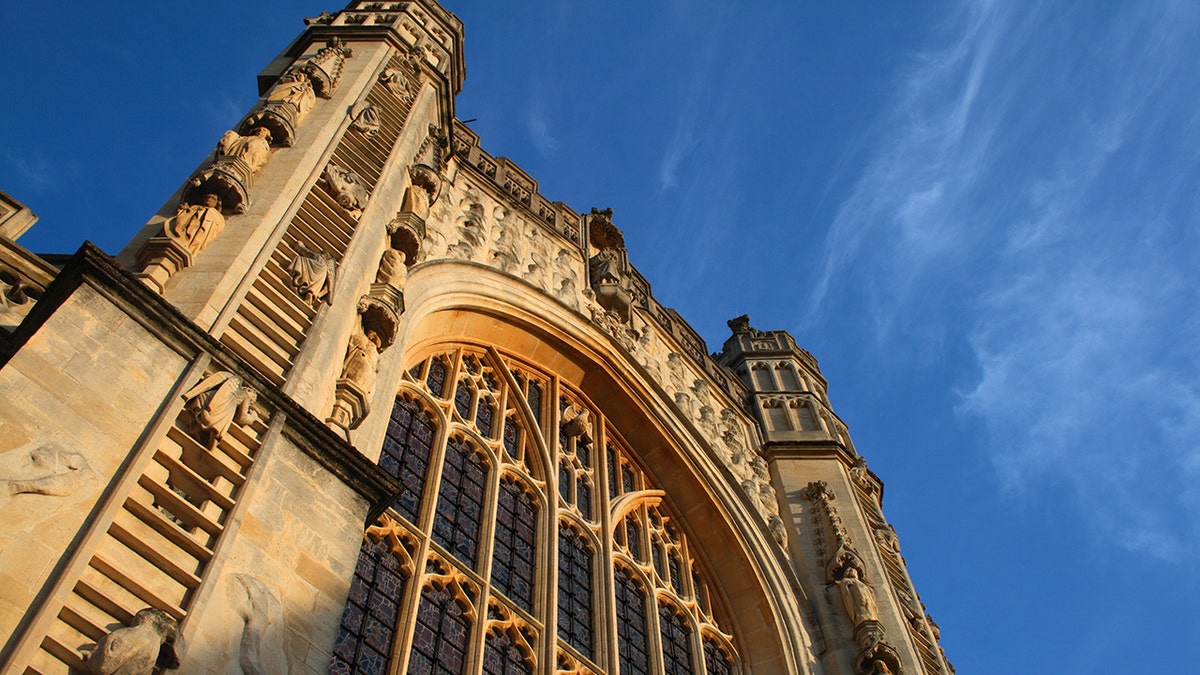Mysterious 'devil coins' discovered in church
Workers on a renovation project at Bath Abbey in the U.K. made a startling discovery when they removed seating in the ancient church - a pair of mysterious coins depicting a devil were beneath the row of seats.
Workers on a renovation project at Bath Abbey in the U.K. made a startling discovery when they removed seating in the ancient church – a pair of mysterious coins depicting a devil were beneath the row of seats.
On one side, the coins bear the Latin legend ‘CIVITAS DIABOLI’ (The city of devils) and on the other the Danish legend ‘13 MAJ ANHOLT 1973’.
Stunned by the bizarre find, researchers worked to unravel the remarkable story behind the ‘devil coins.’ The date on the coins refers to an incident that took place on the Danish island of Anholt in 1973, according to experts from Wessex Archaeology.
GRUESOME HUMAN SACRIFICE DISCOVERY: SKULLS REVEAL GRISLY SECRETS OF LOST AZTEC CITY
“Thirteen ‘ritual sites’ were discovered by local residents which precipitated an investigation by police from the Danish mainland,” the archaeology firm explained, in a statement. Strange masks, weird stone formations, bones wrapped in string, black candles and even a (fake) shrunken head on a stake, were reportedly found at the sites.

The 'devil coins' discovered at Bath Abbey (Wessex Archaeology)
The strange finds were picked up by the Danish national media, sparking stories of black masses and satanic cults on Anholt. There was even a story about possible human sacrifice on the island, which was debunked when the alleged victim contacted the police.
While the initial hysteria died down, the mystery continued as coins similar to those discovered at Bath Abbey started to appear at churches and museums in Denmark. “Some were accompanied by letters claiming to be from a satanic high priestess named Alice Mandragora,” explained Wessex Archaeology, noting that letters or short stories about the “Anholt cult” were also found in Køge city museum and even behind paintings at Copenhagen police headquarters. “All these artifacts reference the date 13 May 1973 and Anholt,” it explained.
Nearly 400 coins are known to have been found.
AMELIA EARHART SIGNED DOCUMENT DISCOVERED IN ATTIC BOX

File photo - Bath Abbey (JamersonG)
The strange artifacts, however, were part of an elaborate hoax. In 2013, the Danish newspaper Politiken revealed that the prank was the brainchild of Knud Langkow, an office clerk at the National Gallery of Denmark who died in 2004 at the age of 73.
Bruce Eaton, Wessex Archaeology’s project manager at Bath Abbey, says that the coins underline the importance of approaching any new “find” with a degree of suspicion.
“To discover finds that are a fabrication, designed to mislead, is both fascinating and a timely reminder that we should always view any discovery with a critical eye,” he told the Independent.
LEONARDO DA VINCI'S EARLIEST WORK DISCOVERED?

File photo - Bath Abbey (iStock) (szaffy)
One aspect of the ‘devil coins’ mystery, however, endures – it’s still not clear how the coins ended up in the British abbey. Nonetheless, there is a pattern of coins appearing at vacation destinations, so it's possible that Langkow or one of his associates placed the coin during a trip to the historic Bath Abbey, Wessex Archaeology told Fox News. But there is no conclusive evidence that that happened, the spokeswoman added.
Other small denomination coins were also found during the renovation of the Abbey as well an order of service for May 15 1902.
Follow James Rogers on Twitter @jamesjrogers

